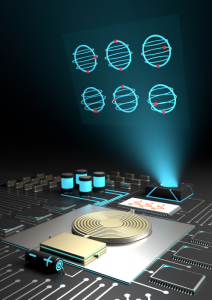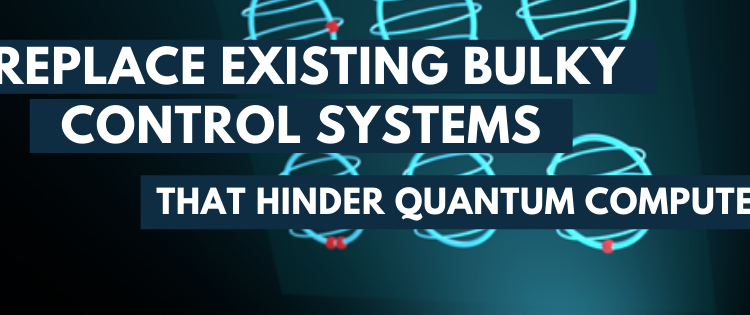A newly designed microwave source could replace existing bulky control systems that hinder the scalability of quantum computers. This breakthrough is the result of a recently developed circuit that produces the high-quality microwave signals required to control quantum computers while operating at temperatures near absolute zero.

The work conducted by researchers in Finland takes a crucial step towards moving the control system closer to the quantum processor, making it possible to significantly increase the number of qubits in the processor.
Why does this help?
One of the factors limiting the size of quantum computers is the mechanism used to control the qubits in quantum processors. This limiting is typically accomplished using a series of microwave pulses. Because quantum processors operate at temperatures near absolute zero, the control pulses are generally brought into the cooled environment via broadband cables from room temperature.
But as the number of qubits grows, so does the number of cables needed. This limits the potential size of a quantum processor because the refrigerators cooling the qubits would have to become more significant to accommodate more and more cables while also working harder to cool them down – ultimately a losing proposition.
This newly built, precise microwave source works at the same extremely low temperature as the quantum processors, at approximately -273 degrees. It is an on-chip device that can be integrated with a quantum processor. It potentially removes the need for high-frequency control cables connecting different temperatures at less than a millimeter in size. With this low-power, low-temperature microwave source, it may be possible to use smaller cryostats while increasing the number of qubits in a processor.
The device produces one hundred times more power than previous versions, enough to control qubits and carry out quantum logic operations. Researchers say it creates an exact sine wave, oscillating over a billion times per second. As a result, errors in qubits from the microwave source are very infrequent, which is essential when implementing precise quantum logic operations.
However, a continuous-wave microwave source, such as the one produced by this device, cannot be used to control qubits. First, the microwaves must be shaped into pulses. The team is currently developing methods to switch the microwave source quickly.
Even without a switching solution to create pulses, an efficient, low-noise, low-temperature microwave source could be helpful in a range of quantum technologies, such as quantum sensors.
Other Applications
In addition to quantum computers and sensors, the microwave source can serve as a clock for other electronic devices, keeping different devices in the same rhythm, allowing them to induce operations for several different qubits at the desired instant of time.
Background Info
Juha Hassel and others carried out the theoretical analysis and the initial design at VTT. Hassel, who started this work at VTT, is currently the head of engineering and development at IQM, a Finnish quantum-computing hardware company. The device was then built at VTT and operated by postdoctoral research Chengyu Yan and his colleagues at Aalto University using the OtaNano research infrastructure. Yan is currently an associate professor at Huazhong University of Science and Technology, China.
The teams involved in this research are part of the Academy of Finland Centre of Excellence in Quantum Technology (QTF) and the Finnish Quantum Institute (InstituteQ).

